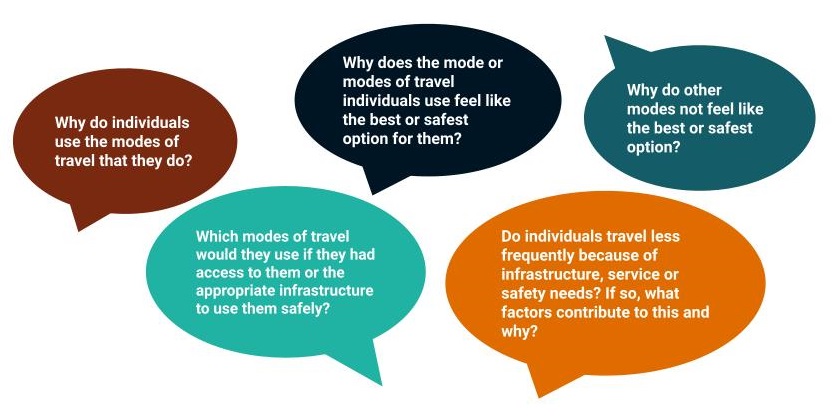02 Dec DVRPC Releases Mobility Choices Study
 Our team at Connect the Dots worked with the Delaware Valley Regional Planning Commission (DVRPC) on their just-released study Mobility Choices: Transportation Conversations in Three Black and Latino Communities in the Greater Philadelphia Region.
Our team at Connect the Dots worked with the Delaware Valley Regional Planning Commission (DVRPC) on their just-released study Mobility Choices: Transportation Conversations in Three Black and Latino Communities in the Greater Philadelphia Region.
The study sought to develop a better understanding of the complex decision-making process in choosing transportation needs, adding a layer of qualitative data in these communities to DVRPC’s existing data sources. The results will be used by DVRPC to help identify future studies, programs, services, and infrastructure needs in historically-disinvested communities.
As the lead consultant on this project, the Connect the Dots team developed a layered engagement approach rooted in community partnerships to research the lived experience of community members and how residents make their transportation choices. Working with Sam Schwartz and DVRPC, three communities were selected as focus areas for the study: Mantua and East Parkside (West Philadelphia, PA), North Trenton (NJ), and Norristown (PA).
The mechanisms to gather insights included:
- Focus groups co-created with community partners
- Online and paper surveys offer in English, Spanish, Simplified Chinese, and Vietnamese
- Shortened intercept surveys in English and Spanish
- Promotion through community events and gathering spots to meet people where they are
Throughout the course of the project, the team spoke with over 185 individuals about what motivates their transportation choices. The resulting report found:
- Reliability is the most important factor in making transportation choices.
- Many participants were using modes of transportation that they did not feel were the best or safest option for them, but felt there were no other options available.
- Personal safety and transportation safety are interrelated and affect available choices.
- The bus was the most desired choice for public transportation, outranking trains, subways, and trolleys.
The full report is available on the DVRPC website: Mobility Choices: Transportation Conversations in Three Black and Latino Communities in the Greater Philadelphia Region
